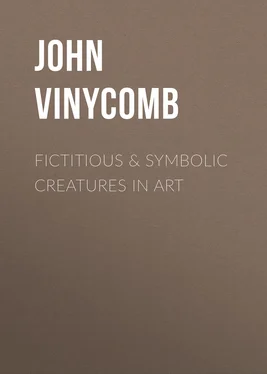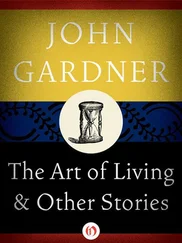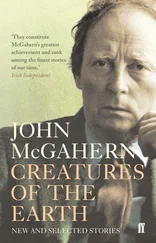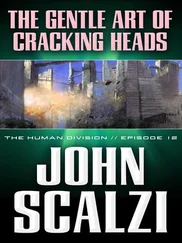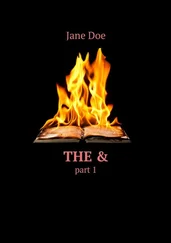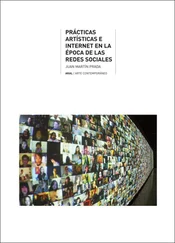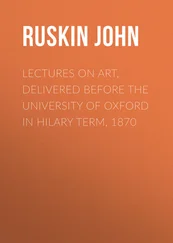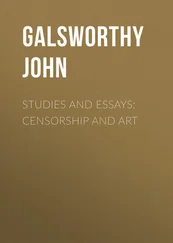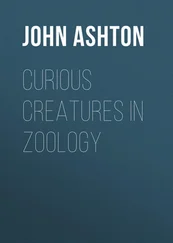John Vinycomb - Fictitious & Symbolic Creatures in Art
Здесь есть возможность читать онлайн «John Vinycomb - Fictitious & Symbolic Creatures in Art» — ознакомительный отрывок электронной книги совершенно бесплатно, а после прочтения отрывка купить полную версию. В некоторых случаях можно слушать аудио, скачать через торрент в формате fb2 и присутствует краткое содержание. Жанр: foreign_antique, foreign_home, visual_arts, на английском языке. Описание произведения, (предисловие) а так же отзывы посетителей доступны на портале библиотеки ЛибКат.
- Название:Fictitious & Symbolic Creatures in Art
- Автор:
- Жанр:
- Год:неизвестен
- ISBN:нет данных
- Рейтинг книги:3 / 5. Голосов: 1
-
Избранное:Добавить в избранное
- Отзывы:
-
Ваша оценка:
- 60
- 1
- 2
- 3
- 4
- 5
Fictitious & Symbolic Creatures in Art: краткое содержание, описание и аннотация
Предлагаем к чтению аннотацию, описание, краткое содержание или предисловие (зависит от того, что написал сам автор книги «Fictitious & Symbolic Creatures in Art»). Если вы не нашли необходимую информацию о книге — напишите в комментариях, мы постараемся отыскать её.
Fictitious & Symbolic Creatures in Art — читать онлайн ознакомительный отрывок
Ниже представлен текст книги, разбитый по страницам. Система сохранения места последней прочитанной страницы, позволяет с удобством читать онлайн бесплатно книгу «Fictitious & Symbolic Creatures in Art», без необходимости каждый раз заново искать на чём Вы остановились. Поставьте закладку, и сможете в любой момент перейти на страницу, на которой закончили чтение.
Интервал:
Закладка:
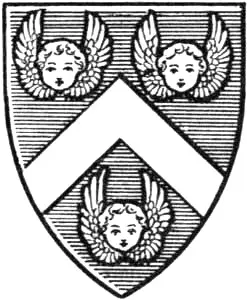
Arms—Azure a chevron argent between three cherubs’ heads of the last.
In representing the cherubim by infants’ winged heads, the early painters meant them to be emblematic of a pure spirit glowing with love and intelligence, the head the seat of the soul, and the wings attribute of swiftness and spirit alone retained.
The body or limbs of the cherub and seraph are never shown in heraldry, for what reason it is difficult to say, unless it be from the ambiguity of the descriptions in the sacred writings and consequent difficulty of representing them. The heralds adopted the figure of speech termed synecdoche, which adopts a part to represent the whole.
Sir Joshua Reynolds has embodied the modern conception in his exquisite painting of cherubs’ heads, Portrait Studies of Frances Isabella Ker, daughter of Lord William Gordon , now in the National Collection. It represents five infants’ heads with wings, in different positions, floating among clouds. This idea of the cherub seems to have found ready acceptance with poets and painters. Shakespeare sings:
“Look how the floor of heaven
Is thick inlaid with patines of bright gold:
There’s not the smallest orb which thou beholdest
But in his motion like an angel sings,
Still quiring to the young-eyed cherubim—
Such harmony is in immortal souls:
But while this muddy vesture of decay
Doth grossly close it in, we cannot hear it.”
Many of the painters of the period of the Renaissance represented the cherub similarly to those in Reynolds’ picture. They were also in the habit of introducing into their pictures of sacred subjects nude youthful winged figures, “celestial loves,” sporting in clouds around the principal figure or figures, or assisting in some act that is being done. Thus Spenser invests “The Queen of Beauty and of Love the Mother” with a troop of these little loves, “Cupid, their elder brother.”
“And all about her neck and shoulders flew
A flock of little loves, and sports and joys
With nimble wings of gold and purple hue;
Whose shapes seemed not like to terrestrial boys,
But like to angels playing heavenly toys.”
These must not, however, be confounded with the cherub and seraph of Scripture. It was a thoroughly pagan idea, borrowed from classic mythology, and unworthy of Christian Art. It soon degenerated into “earthly loves” and “cupids,” or amorini as they were termed and as we now understand them.
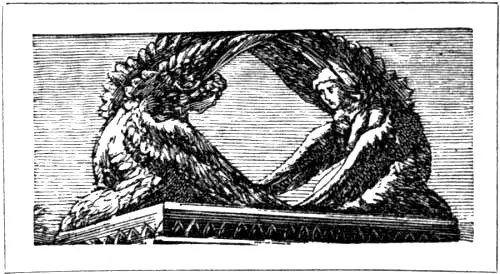
Cherubim and Seraphim of Scripture
In Ecclesiastical Art literal renderings of the descriptions contained in the Old Testament and the Apocalypse are not of unfrequent use. A more lengthened reference to these great Hebrew symbolic beings will not be considered out of place, as there is great doubt and uncertainty as to their forms.
These mystic symbolic beings were familiar to all the patriarchs—from Adam, who gazed upon them in Paradise, and against whom on his expulsion they stood with flaming sword, turning every way to bar his return—to Moses, who trembled before it on Mount Sinai; while to the Priests and Levites, the custodians of the Ark of the Covenant in the Tabernacle, the cherubim remained the sacred guardians in the Holy of Holies of the palladium of the national faith and liberties during the brightest and, as it has been termed, the most heroic period of Jewish history.
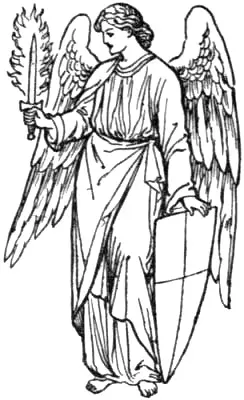
Angel crest of Tuite, Bart. co. Tip.
Josephus, the more effectually to excite respect for the great Hebrew symbol in the minds of his readers, purposely throws over it the veil of obscurity. He says: “The cherubim are winged creatures, but the form of them does not resemble that of any living creature seen by man.” In the works of Philo Judæus there is an express dissertation upon the cherubim. The learned Brochart and many others have attempted to elucidate the subject to little purpose. The ambiguity which always accompanies a written description of objects with which we are imperfectly acquainted applies with greater force to this mysterious being combining so many apparently conflicting attributes.
To the prophetic vision of Ezekiel, the description of which, in the opinion of competent critics, excels in grandeur of idea and energy of expression the most celebrated writers of ancient and modern times, the reader is referred, as it supplies at first hand almost all that can be known concerning the fearful form of the cherubim.
The four living creatures that support the throne of God exhibited to Ezekiel a fourfold aspect; they had each the face of a man , the face of a lion , and the face of an ox ; they also had the face of an eagle . They had each four wings; they had the hands of a man under their wings. “Two wings of every one were joined one to the other, and two covered their bodies.” They were accompanied by wheels which “went upon their four sides, and they turned not when they went”; “and their whole body, and their backs, and their hands, and their wings, and their wheels were full of eyes”; “and the living creatures ran and returned as the appearance of a flash of lightning.” Such is a concise description of their appearance as set forth in Ezekiel (chap. i.).
“This wonderful and mysterious hieroglyph must be considered as a striking and expressive emblem of the guardian vigilance of providence, all-seeing and omniscient; while the number of wings exhibit to us direct symbols of that powerful, that all-pervading spirit which, while it darts through nature at a glance, is everywhere present to protect and defend us” (Dideron).
So attached were the Jews to this celestial symbol that when Solomon erected that stupendous temple which continued the glory and boast of the Hebrew nation for so many ages, we are told (1 Kings, vi. 29, viii. 6, 7), he carved all the walls of the house round about with the sculptured figures of the cherubim, and on each side of the ark was a cherub of gold plated upon olive wood fifteen feet high, with their faces to the light, their expanded wings embracing the whole space of the sacred enclosure, serving as a visible sign or symbol of God’s immediate presence, whence the saying of David, “God sitteth between the cherubim” (Ps. xcix. 1). In this place God perpetually resided in the form of a bright cloud or shining luminous body, termed “shechinah,” whence the divine oracles were audibly delivered.
Milton gives the following description of the Seraph Raphael:
“At once on the eastern cliff of Paradise
He lights, and to his proper shape returns
A seraph wing’d; six wings he wore to shade
His lineaments divine; the pair that clad
Each shoulder broad came mantling o’er his breast
With regal ornament: the middle pair
Girt like a starry zone his waist, and round
Skirted his loins and thighs with downy gold
And colours dipped in heaven; the third, his feet
Shadows from either heel with feather’d mail
Sky tinctured grain. Like Maia’s son he stood
And shook his plumes, that heavenly fragrance fill’d
The circuit wide.”
The cherub is traditionally regarded as a celestial spirit which in the hierarchy is placed next in order to the seraphim. All the several descriptions which the Scripture gives us of cherubim differ from one another, as they are described in the shapes of men, eagles, oxen, lions, and in a composition of all these figures put together. The hieroglyphical representations in the embroidery upon the curtains of the tabernacle were called by Moses (Ex. xxvi. 1) “cherubim of cunning work” (Calmet).
Читать дальшеИнтервал:
Закладка:
Похожие книги на «Fictitious & Symbolic Creatures in Art»
Представляем Вашему вниманию похожие книги на «Fictitious & Symbolic Creatures in Art» списком для выбора. Мы отобрали схожую по названию и смыслу литературу в надежде предоставить читателям больше вариантов отыскать новые, интересные, ещё непрочитанные произведения.
Обсуждение, отзывы о книге «Fictitious & Symbolic Creatures in Art» и просто собственные мнения читателей. Оставьте ваши комментарии, напишите, что Вы думаете о произведении, его смысле или главных героях. Укажите что конкретно понравилось, а что нет, и почему Вы так считаете.
